

Suspension 101: Pick the Right Setup for Your Ride
Tires help get power to the ground, and without the right set, it’s possible to sit in an infinite burnout and not go anywhere. But what many don’t understand is that the proper suspension setup is much more important than the right set of shoes.
If the best tires for cars can’t make effective contact with the terrain then they won’t get you anywhere. Getting the power down (traction on the terrain) is one important thing, ride comfort and safety are others altogether. When picking your suspension setup, to get the best off-road suspension all three need to be taken into consideration. Most off-road capable vehicles nowadays see much more time on the street than they do on the dirt, so you’ll need to consider how much comfort and performance you’re willing to sacrifice on either terrain in the interest of building a vehicle that best meets all of your specific needs. There is not a perfect suspension design that does all things perfectly: It’s a give-and-take situation. But you can still find the best suspension for off road that is also a great riding and performing rig both on and off the highway.
Multiple suspension designs exist, and they all offer certain qualities that make them better for one situation versus another. So to properly set up your rig, you’ll first need to know what’s out there, how they work, what they do well, and what they don’t do well. From there you can decide what suspension setup is best for you and how to modify it to better suit your exact needs.
Solid Axles

Solid axle, leaf spring suspension is the cheapest and easiest to get decent results from.
Henry Ford used solid axles for his Model T as far back as the early 1920s. They were done differently than today with a transversely mounted leaf spring (simply put, a single sideways mounted leaf spring). Obviously, it’s no longer a new design as it’s been around for almost a century, having gone through multiple rounds of upgrades and tweaks since inception, but they work great off-road, and even with the decent amount of bumpsteer they come with, they do fairly well on-road as well. A long travel leaf spring setup can handle substantially more weight with fewer problems than other designs. This is why we see solid axles under most SUVs and every sized truck. However, suspension systems for solid axles are many, and they all have their own strengths and weaknesses, as well as their individual ways of modifying them for the dirt.
Leaf Spring Suspension

Airbags were added to this long travel leaf spring setup to add weight-carrying capability.
With a factory truck leaf spring rearend on a 2014 Ford Super Duty, the main two leaves locate the axle and handle basic operation spring duties. The upper and lower springs are overloads and only come into play when the vehicle is carrying a heavy load.

Here, a race pack featuring multiple smaller leaves is designed to simultaneously carry the weight of the vehicle and move freely, allowing for a better ride through rough terrain. This pack has also been powdercoated to match the vehicle.
By far the simplest design and cheapest to modify, a long travel leaf spring setup is just multiple pieces of spring steel (a steel with memory that returns to its original shape after being deformed) stacked in varying widths (rates) or amounts of leaves depending on the need. The axle is mounted to the center of the leaf (in most situations) and the frame secures both eyelets of the spring, one solid mounted and the other with a shackle to allow for suspension travel. Stock leaves generally have a main pack, which allows for a pleasant ride during normal, unloaded daily driving. Below that spring (and sometimes above it) is an overload spring that takes over when the vehicle is loaded. It’s a much more robust spring designed to only come into play when the rig has a large load on/in it.
Suspension lift with a truck leaf spring setup is simple; in the rear, blocks can be used, which simply put a spacer in the suspension, raising the vehicle by whatever thickness the spacer is, although these blocks will create added axle wrap under acceleration, wearing out driveshaft components or worse. So, the use of blocks should be kept to just a few inches in lift, anything higher and you should consider getting new leaves made, adding a leaf to your existing pack, or having your existing leaves reached by a qualified shop. Adding blocks will give you a stock-like ride with stock-like performance with the benefit of larger tires; adding a leaf will make the ride stiffer, and for the most part will just add more room for tires; re-arching the leaves will generally make the ride stiffer, and again, only add room for more tires. Getting new leaves made will make the ride just about whatever you want it to be.
Lifting or modifying a front leaf spring rig should only be done with new leaves or with parts designed specifically for the front of a leaf spring vehicle. Blocks are not a good idea up front. There’s just too much of a rotational load on the front end to make them safe at all.
Drawbacks to truck leaf spring solid axles are mainly a lack of “tuneability” when compared to four-link setups (see 4-Link section below). Axle wrap is also a concern, but can be taken care of with a set of traction bars fairly easily.
Four-Link Suspension

Pure Performance’s 4-Link design for later model Ford Super Dutys uses a bracket mounted to the factory radius arm mount, which gives the new four-links a place to mount to the truck. Spring duties are then taken care of by coils in this instance, with a large reservoir shock controlling it all.

This show-ready four-link setup has triangulated upper links that help locate the axle, stopping it from wandering from side to side. It also uses trailing arms (lower) that the bypass shocks mount to. Usually, you’d see a coilover here, but the owner has elected to use air springs instead.
Ram trucks use this radius arm suspension design. It’s very similar to four-link designs except caster will change as the suspension cycles. Carli Suspension’s radius arm setup for the Ford Super Duty includes new arm mounts, coil springs, reservoir shocks, radius arms, a steering stabilizer, and more. This is one of the higher-end suspension systems out there. This is where it gets interesting. Four links, three links, radius arm, and triangulated link setups are the ultimate way to tune your rig’s suspension. A link suspension, similar to those found under late-model Jeep Wranglers, Rams, and Ford Super Dutys, consist of multiple solid arms, which connect the axle to the vehicle with some sort of pivoting joint. The axle then can move freely with little restriction within the limits that the links set. The solid links will also keep the axle aligned exactly how you want it to be, at any point in the suspensions travel, no matter the engine load. Springs (air, coils, coilovers, hydraulic arms, and so on) of any type are then used to keep the vehicle at ride height.
Due to the solid links and free choice of shock and spring combos, this type of suspension is the most tuneable for any terrain or situation. With the right knowledge, it can literally be set up to do just about anything, which is why it’s one of the best suspensions for off-road. Adjusting things like the angle and/or the length of each link will affect how the vehicle reacts to acceleration, braking, turning, size of terrain, high-speed performance, and low-speed performance. If you’ve ever seen an off-road racing Trophy Truck take off from a stop and hit a turn at high speed, you would have noticed the excessive lifting and rolling of the vehicle during both situations. They were not designed to take corners well at all. But, this is an aspect designed and tuned into the suspension. Those trucks are made to travel at very high speeds through desert terrain that often includes sections of “whoops” (large repetitive bumps in the road) that are commonly over a few feet tall. The suspension is designed to move quickly to keep the tires on the ground as much as possible, maximizing driver control. And the rear link setup is usually designed more to load the rear tires allowing for maximum rearend traction. A rock buggy would have a totally different set of link geometry to help it claw its way over large boulders. These are the two extremes. Most link setups are designed to be somewhere in between.
For most of us, we’re just fine with a small lift kit to gain clearance for both larger truck rims and tires, as well as whatever objects the terrain has to throw at us. Those lifts range from simple coil spring spacers adding a couple of inches to more involved kits that come with slightly longer links and new coil springs, possibly coilovers. From there, you’ll start getting into long arm suspensions that relocate the factory link mounting points and use much longer links to achieve extra travel while keeping wheel alignment angles correct throughout the range of travel. A coilover would then be the most common type of shock/spring to be used.
Beam Suspension

An off-road racing twin I-beam design. This one cycles a massive 26 inches of travel.
Ford designed the beam suspension. It was a revolutionary design when it was released. Modifying involves drop-down brackets and springs for light to medium off-road use. All out race systems use new, longer I-beams and radius arms as well as coilover shocks.
Ford’s Twin Beam (I-Beam for 2WD, Twin Traction Beam for 4WD) suspension is a true HD truck suspension and was available in Rangers, Broncos, E-Vans, and F-Series trucks. It was originally designed to reduce bumpsteer in vehicles that had previously used a solid axle, 2WD, or 4WD. It’s a sort of happy medium between a full solid axle (which handles heavy loads extremely well and works well on the dirt) and A-arm suspension (which handles great on the road, but not as well with heavy loads or in off-road situations). Currently, no late-model vehicles sold after 2014 use this suspension design; the 2WD E-Vans were the last ones in production.
The Twin Beam can be best thought of as a single “L” frame: The bend in the “L” is where the wheel mounts and the other two sides which are pivot points that are mounted with bushings to different parts of the frame. One pivot basically is secured under the motor mount on either side, and the other under the passenger and driver doors, respectively. By making either of the two sides longer, the amount of usable wheel travel can be increased upwards of 30 inches of travel or more. Coil springs are the most common way of suspending the vehicle here. The most common way of achieving a midrange suspension that can perform well on either terrain is with a set of drop brackets and matching coil springs to gain lift and a bit of wheel travel. Any more than that, you’re looking at coilovers with custom mounts as well as longer I-beams and the adjoining radius arm.
Twin Beam suspensions are a favorite of high-speed desert racers due to the ease of getting huge amounts of wheel travel out of them at lesser cost than with A-arm designs. Plus, since they were originally designed to handle very heavy loads, the steering and other parts are built robustly enough from the factory to handle harsh desert terrain at very high speeds. Drawbacks from this type of suspension design include uneven tire wear and unstable camber throughout the suspension’s range of travel.
Double Wishbone Suspension

Correctly tuned suspension will allow you to climb even the toughest terrain.
Double wishbone systems, also known as A-arm suspension, are the best of all designs on the street, but lack slightly in the dirt (in stock form).

Drop-down brackets are commonly used to help gain some ground clearance with double wishbone systems. This one is an extreme drop down bracket example; most are only a few inches tall.
The Double Wishbone Suspension (aka A-arm) design was and is a total departure from straight axle thought and is actually a bit closer to a link setup in theory. While the Twin Beam style looked to reduce bumpsteer from the solid axle design, A-arm suspension takes it a step further by completely isolating the wheel and tire while keeping its travel perfectly (when designed correctly) aligned to the road, maximizing driver comfort and control.
Utilizing a dual set of wishbones (often called A-arms or control arms) and a steering knuckle in which the wheel is secured, this suspension type keeps the wheel aligned almost perfectly throughout its range of travel. Therefore, it allows for extremely good on-road manners, but not as much off road in stock trim. The dual A-arms are generally parallel, so when the wheel moves over the bumps, the angle of the wheel and tire stays the same and therefore steers straight, whether at full droop or full compression. Spring types are all over the board here. Torsion springs are the late-model favorite although coil springs and struts are also in the mix from the OEMs.
The aftermarket offers steering knuckles that will allow a small 1- to 3-inch lift while keeping stock ride. There’s also a whole slew of coil and strut spacers, as well as torsion bar keys that will also allow for just a few inches of lift with minimal effect on ride quality. For even more ground clearance, kits generally end up relying on drop-down brackets, which take the mounting points for the control arms and move them down to achieve the lift. The sky is the limit there; 16-inches of lift or even more is entirely possible.
For high-performance, long-travel suspension setups, new longer control arms and custom spindles are the norm. Stock springs will be ditched and replaced with coilovers in most cases; 12 inches of travel and 6 inches of lift is a common occurrence here. Just know that these types of kits are closer to “race only” designs and on-road performance will be hindered.
Editor’s Note: A version of this article first appeared in the Winter 2015 print issue of Tread Magazine.
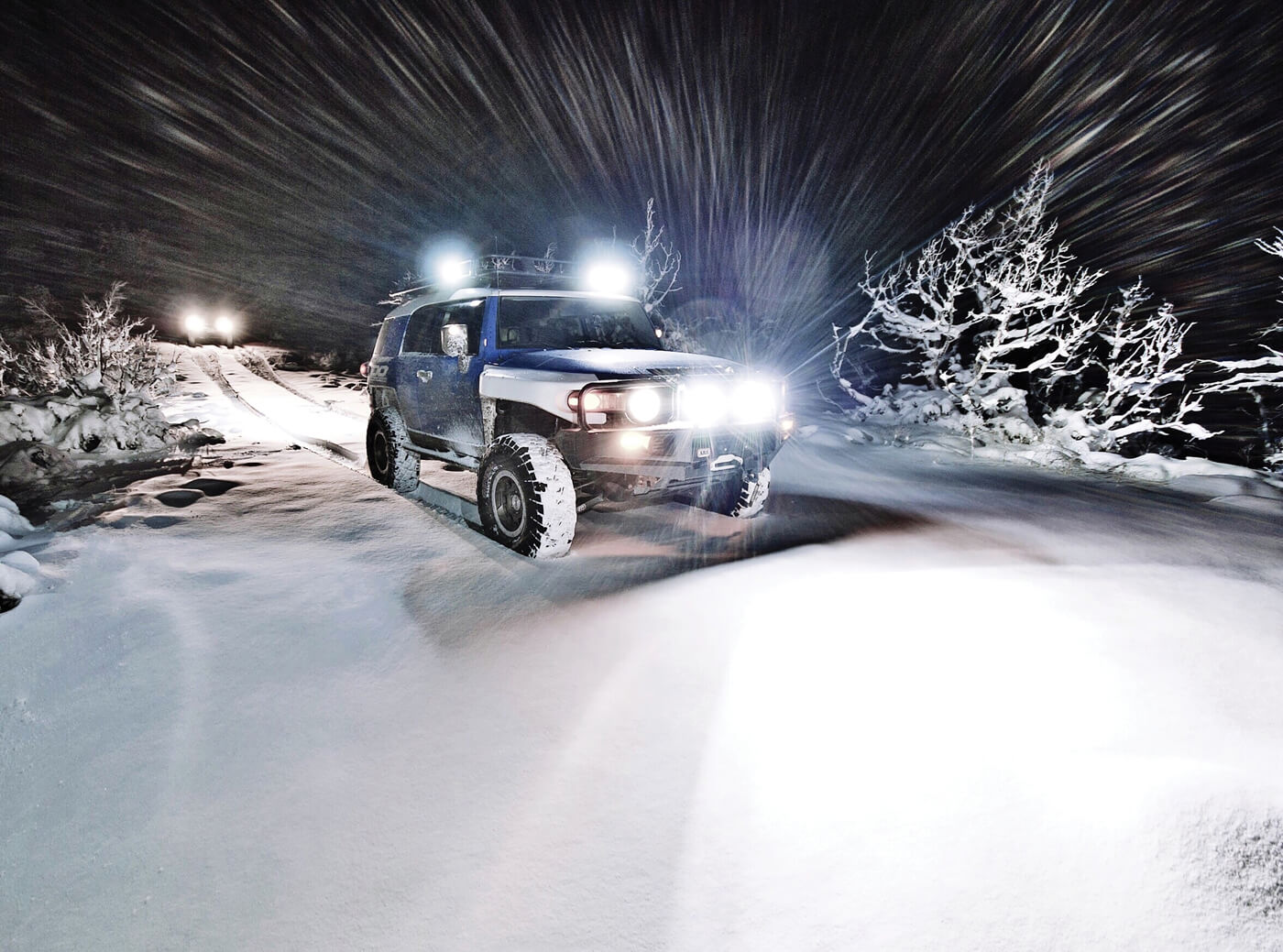
Lorem ipsum dolor sit amet, consectetur adipisicing elit sed.
Follow us on
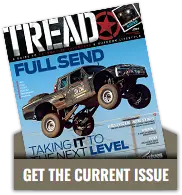
Long Travel Suspension 101: Enhance Your Off-Road Adventure!
Long travel suspension enhances a vehicle’s off-road capability by allowing for greater wheel travel. This system improves traction and comfort over rough terrain.
Off-roading enthusiasts often seek out long travel suspension systems to upgrade their vehicles’ performance. With the increased wheel travel, the suspension can absorb more shocks from uneven surfaces, leading to a smoother ride in challenging conditions. This kind of suspension is crucial for drivers aiming to tackle steep hills, large rocks, and other obstacles that require a high level of articulation and responsiveness.
Investing in a quality long travel suspension system can significantly transform the off-roading experience, providing both durability and improved handling. It is an essential modification for serious off-road vehicles and contributes to the safety and capability of the adventure-seeking driver’s arsenal.
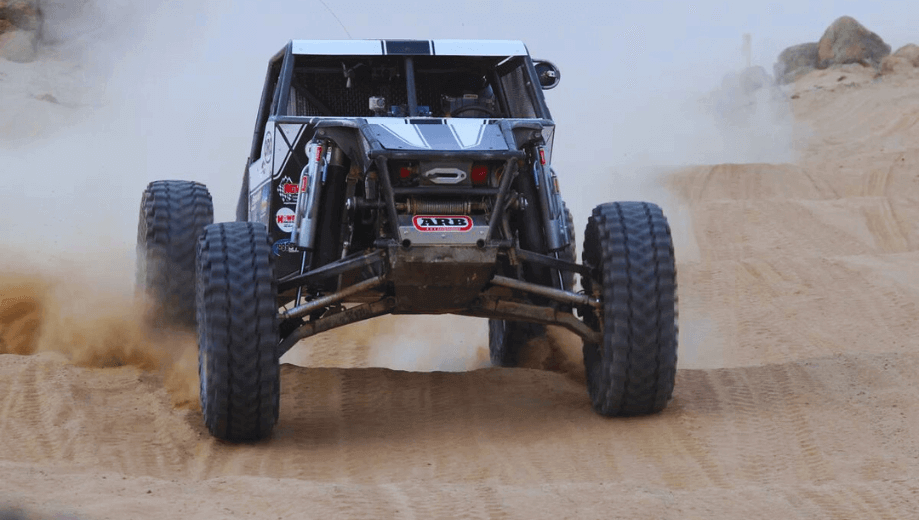
Long Travel Suspension
Imagine your off-road vehicle gliding over rough terrain with ease. That is the magic of long travel suspension. It’s key for ultimate off-road performance . Let’s dive into what this suspension system is all about.
Defining Long Travel Suspension
Think of long travel suspension as the ultimate upgrade for your vehicle’s legs. It allows for more wheel movement. This means your tires stay on the ground over bumps and dips.
The Role Of Suspension In Off-roading
- Comfort: It smooths out bumpy rides.
- Control: Better tire contact equals more grip.
- Safety: It helps prevent rollovers.
Advantages Of Upgrading To Long Travel Suspension
- Improved handling: More responsive steering.
- Greater clearance: Tackle taller obstacles.
- Better shock absorption: Softer landings from jumps.
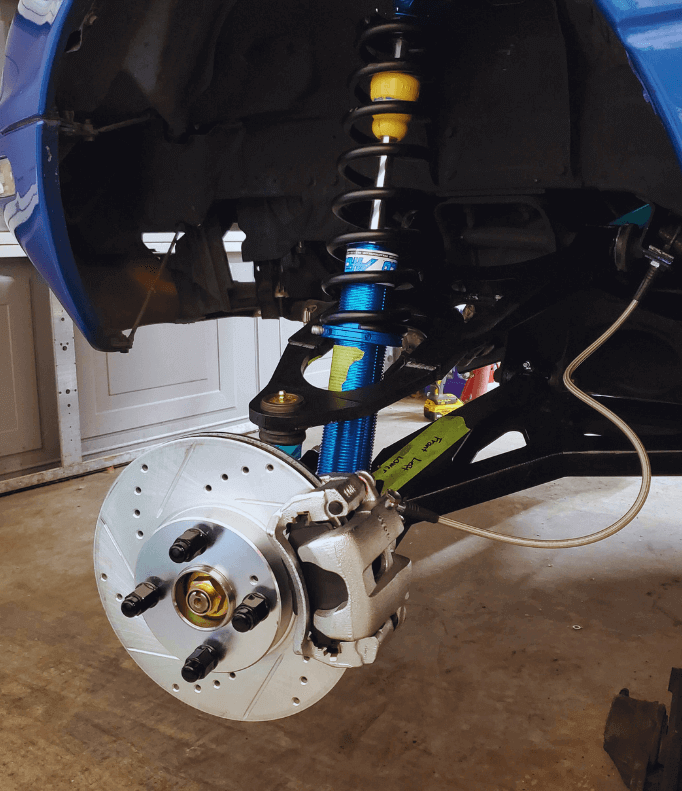
Components Of Long Travel Suspension Systems
Long travel suspension systems transform your vehicle’s performance off-road. Below are key components that let these systems smooth out rough terrain, giving you a more comfortable ride.
Shocks And Their Impact On Performance
The role of shocks is crucial in a long travel system. They absorb bumps and provide the right damping. Better shocks mean a smoother ride. Here are standout features:
- Adjustable damping: Tailor your ride to the terrain.
- Oversized design: More oil and air capacity to handle more abuse.
- Heat dissipation: Keeps performance consistent.
Understanding Control Arms And Linkages
Control arms connect your wheels to the frame and let them move. Linkages maintain wheel alignment. Both are crucial for stability and handling.
The Significance Of Springs And Coilovers
Springs and coilovers store energy when pressed down. They help your vehicle bounce back smoothly after hitting a bump. Let’s outline their importance:
- Weight support: They carry your vehicle’s load.
- Ride height adjustment: Raise or lower your vehicle.
- Progressive rates: Provide softer or firmer rides as needed.
Additional Components: Cv Joints, Tie Rods, And Axles
Alongside the main parts, other elements like CV joints , tie rods , and axles are vital. They join wheels to the drivetrain, steering to the suspension, and transfer power to the wheels.
- CV Joints: Allow wheels to turn and move up and down.
- Tie Rods: Connect steering rack to the wheels.
- Axles: Transmit torque from the engine to the wheels.
Selecting The Right Long Travel Suspension For Your Vehicle
Long travel suspension systems are crucial for off-road enthusiasts. These systems offer improved traction , increased wheel travel , and better absorption of bumps and obstacles. Choosing the right system can be a major upgrade for your vehicle.
Assessing Your Off-road Requirements
Understanding your off-road activities helps identify the right suspension . Do you need endurance for desert racing, precision for rock crawling, or something versatile for varied terrain? Outline your off-road goals to determine suspension needs that match your adventure intensity.
Compatibility With Different Vehicle Models
Ensuring compatibility is essential when selecting a long travel suspension. Not all systems fit every vehicle. Manufacturers offer kits designed for specific makes and models. Consult with manufacturers or use their online tools to find matching kits for your vehicle.
Pros And Cons Of Popular Long Travel Suspension Brands
- Brand A: Known for durability, might be costly.
- Brand B: Offers comfort, may lack in extreme performance.
- Brand C: Affordable, could have a shorter lifespan.

Budget Considerations And Investment Expectations
Long travel suspensions are an investment in your vehicle’s performance. Set a realistic budget that reflects your off-road demands. Premium kits often mean longevity and better support, while more affordable options might require sooner replacements.
Installation And Maintenance Of Long Travel Suspension
Ready for a smoother ride and better off-road performance? Installing a long travel suspension system might be your next big project. This setup isn’t just about slapping on bigger shocks; it’s a detailed process. It requires careful planning and maintenance. Here’s everything you need to get started and ensure lasting performance.
Diy Vs. Professional Installation: What To Choose?
Cost-effectiveness and personal satisfaction are big wins for DIY. Yet, risks include potential mistakes and longer installation time . Professionals bring expertise and precision. This ensures a quick and correct fit .
Step-by-step Guide To Installing Long Travel Suspension
- Gather tools and components : Make sure you have everything on hand.
- Remove old suspension : Take off current shocks, springs, and related parts.
- Install new components : Follow the manufacturer’s guide to fit new parts.
- Alignment and testing : Check angles and take a test drive to ensure proper function.
Routine Maintenance Tips For Peak Performance
- Inspection : Regularly check for wear and tear.
- Greasing : Keep parts lubricated to avoid friction and damage.
- Tighten bolts : Ensure all connections are secure after each off-road trip.
- Shock checks : Monitor for leaks or damage and address immediately.
Troubleshooting Common Issues In Long Travel Suspensions
Real-world applications and user experiences.
Long Travel Suspension systems are a game-changer for vehicle performance, especially in demanding environments.
They transform the ride, providing unmatched comfort and handling.
Off-road enthusiasts and professional racers alike reap the benefits of these robust upgrades.
Let’s dive into real-life examples and consumer insights.
Case Studies: Transformations With Long Travel Suspension
Remarkable improvements are seen when vehicles get equipped with Long Travel Suspension.
- Jeeps overcoming rocky terrains with ease
- Trucks maintaining stability on harsh trails
- SUVs achieving greater wheel travel for safer rides
User Reviews And Feedback On Performance Enhancements
Owners share their success stories after upgrading.
“A total transformation” and “next-level handling” are common praises.
Long Travel Kits enable vehicles to handle tough conditions with unprecedented grace.
Off-roading Trips Enhanced By Long Travel Suspension
Rugged adventures are now more exhilarating thanks to Long Travel Suspension setups.
Adventurers share experiences of smoother rides on mountain paths , desert sands , and muddy tracks .
Expert Advice: Maximizing Your Vehicle’s Off-road Capability
Professionals offer tips to optimize performance:
- Choose the right suspension kit for your vehicle type
- Regular maintenance for lasting durability
- Proper installation is key to reliability
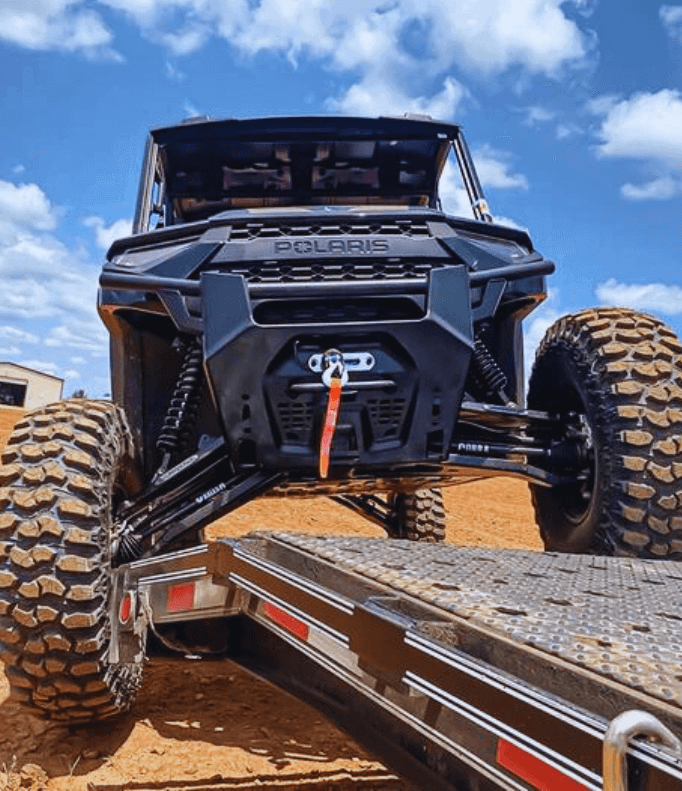
Future Outlook Of Long Travel Suspensions
The journey through the exhilarating realm of long travel suspensions now reaches an informative end. We stand at a juncture where reflection on benefits meets the anticipation of future advances. Join us as we glance back, project forward, and determine the value of long travel suspensions in the automotive landscape.
Recap Of Long Travel Suspension Benefits
Long travel suspensions serve as the backbone of off-road mastery. These robust systems:
- Absorb shocks from rough terrain, ensuring a smoother ride.
- Enhance wheel articulation , crucial for maintaining contact with the ground.
- Improve overall vehicle stability and control during high-speed adventures.
Emerging Trends In Suspension Technology
Innovations are unfolding within suspension technology. Here’s what’s gaining momentum:
- Advanced materials are being utilized to reduce weight and increase durability .
- Electronic control systems are enhancing adjustability and responsiveness.
- Adaptive suspensions are being developed that can automatically calibrate to diverse terrains.
Is Long Travel Suspension Worth It?
Assessing the merits of long travel suspensions, it’s clear they are invaluable for off-road enthusiasts . The capacity to tackle diverse landscapes with ease positions long travel suspensions as a worthwhile investment. Performance gains , coupled with the promise of emerging technologies, ensure these systems remain relevant and revolutionary.
Frequently Asked Questions
What is long travel suspension.
Long travel suspension systems provide increased wheel travel for off-road vehicles. They enhance handling and performance on rough terrains. By allowing more suspension movement, vehicles can better absorb impacts and maintain traction.
Benefits Of Long Travel Suspension?
Long travel suspension offers improved off-road handling, increased ground clearance, and a smoother ride over obstacles. It enhances vehicle stability and tire contact with the ground, leading to safer and more enjoyable off-road adventures.
How To Install Long Travel Suspension?
Installing a long travel suspension typically involves replacing stock components with longer, aftermarket parts. It requires mechanical skills and tools, and it’s often recommended to consult a professional for proper installation to ensure safety and performance.
Long Travel Vs. Short Travel Suspension?
Long travel suspension is geared towards off-road performance, providing greater wheel travel. Short travel focuses on on-road comfort and handling. Choose long travel for rugged terrains and short travel for daily driving and efficiency.
Embarking on off-road adventures demands reliable equipment. A long travel suspension kit stands as a true game-changer for enthusiasts. It not only enhances control but also improves vehicle resilience. Remember, choosing the right setup ensures an unmatched riding experience. Explore, equip, and enjoy the transformative impact on your journey.
Related Posts

P0441 Toyota Error: Quick Troubleshooting Tips
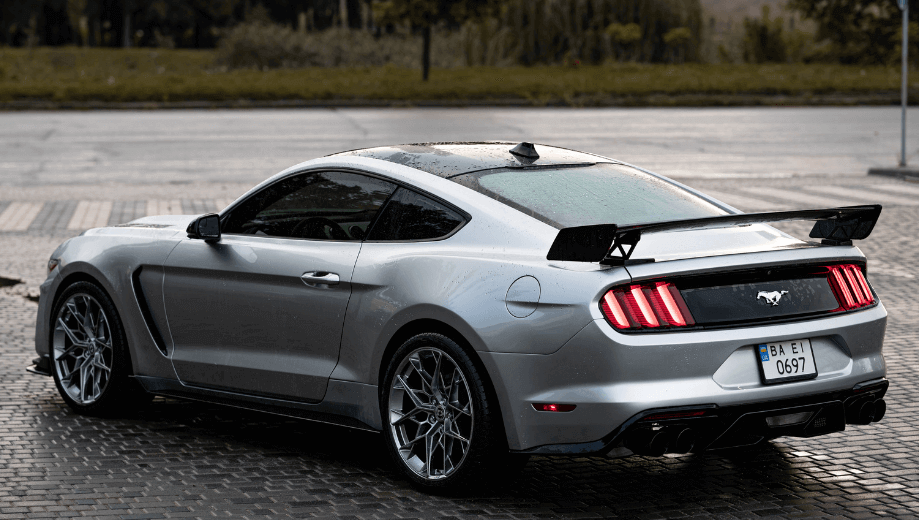
2023 Porsche Cayenne Configurations: Tailor Your Ride!
Leave a comment cancel reply.
Your email address will not be published. Required fields are marked *
Save my name, email, and website in this browser for the next time I comment.

CarParts.com will be back soon!
We apologize for the inconvenience. The CP Team is working on some upgrades to improve our service. Thank you for using CarParts.com!
You can call us at
1-866-529-0412
Reference ID: 18.6fc733e.1713866138.1870a3c

IMAGES
VIDEO